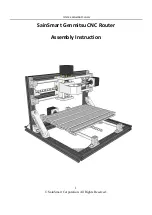
99
File system management
File system overview
Files such as host software and configuration files that are necessary for the operation of the device are
saved in the storage media of the device. You can manage the storage media and the files saved on the
media, and organize the files under different directories for easy management.
Filename formats
When you specify a file, you must enter the filename in one of the following formats.
Table 11
Filename formats
Format Description
Length
Example
file-name
Specifies a file in the current
working directory.
1 to 91
characters
a.cfg indicates a file named
a.cfg
in the current working directory. If
the current working directory is on
the master,
a.cfg
represents file
a.cfg
on the master; if the current
working directory is on a slave,
a.cfg
represents file
a.cfg
on the
slave.
path
/
file-name
Specifies a file in the specified
folder in the current working
directory.
path
represents the
folder name. You can specify
multiple folders, indicating a file
under a multi-level folder.
1 to 135
characters
test/a.cfg indicates a file named
a.cfg
in the
test
folder in the current
working directory.
drive
:/[
path
]/
file-
name
Specifies a file in the specified
storage medium on the device.
drive
represents the storage
medium name. The storage
medium on the master is usually
flash; the storage medium on a
slave is usually slotX#flash, where
X represents the member ID of the
slave, for example slot2#flash. To
view the correspondence between
a device and its member ID, use
the
display irf
command.
1 to 135
characters
flash:/test/a.cfg indicates a file
named
a.cfg
in the
test
folder in the
root directory of the flash memory
on the master.
To read and write the a.cfg file in
the root directory of the flash on a
slave (with the member ID 2), input
slot2#flash:/a.cfg
for the filename.
Managing files
You can display the specified directory or file information; display file contents; rename, copy, move,
remove, restore, and delete files.















































